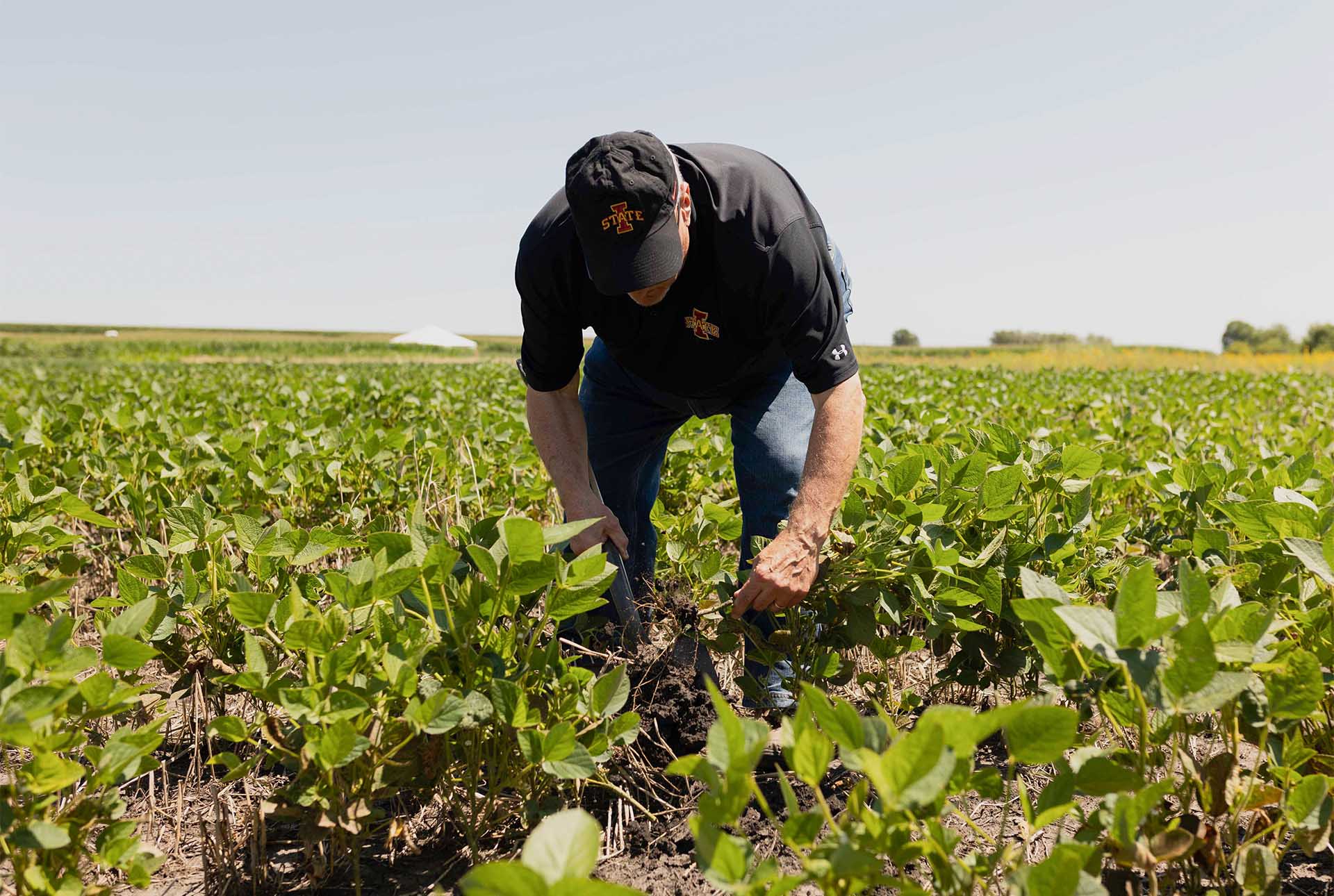
(Photo: Iowa Soybean Association / Joclyn Bushman)
When the heat is on: How soybeans grow
April 1, 2024
By Laura Temple, Soybean Research Information Network
Soybeans can adapt to stressful growing conditions. Many factors, such as temperature, moisture, light and nutrient availability, work together to influence what happens in the plant, causing it to grow in a way that manages stress.
Environmental stresses could increase, based on predictions about changing climate patterns. That raises questions about how soybeans may need to adapt in future production environments.
Conversation at a farmer meeting sparked Iowa State University research through the Iowa Soybean Research Center (ISRC) to investigate what happens in soybeans under climate stress. The ISRC matches soy checkoff investments from the Iowa Soybean Association with other funds.
ISRC funded this specific project with additional support from the United Soybean Board, USDA-National Institute of Food and Agriculture and the National Science Foundation through the Cyber-Physical Systems project.
The research team tackled the challenge of understanding how heat stress impacts soybean growth at a molecular level both above and below ground. Liza Van der Laan, a Ph.D. candidate in plant breeding at Iowa State University, focused on how heat directly impacts gene expression, or how genetics translate into plant functions, in different soybean varieties.
“What we learn can inform forward-looking breeding,” says Van der Laan. “With detailed information about what functions in soybean genetics support heat tolerance, we can build genomic tools and identify genetic regions that can become molecular markers for breeding soybeans to better tolerate that heat.”
Her research used the Enviratron, a climate-controlled research facility at the Iowa State research farm funded by the National Science Foundation that allows manipulation of a wide range of environmental factors. Four different soybean varieties germinated and grew under optimal temperatures, 28°C or 82°F, and elevated temperatures, 38°C or 100°F.
Selected varieties included:
- a plant introduction with heat tolerance based on prior screening
- a plant introduction showing susceptibility to heat stress based on the same screening.
- a commercial variety from Iowa State University.
- Williams 82, the variety used as the reference for genome sequencing, which served as the comparison or check for the others.
Van der Laan monitored the soybeans for 45 days, well into vegetative growth, for their phenotypes, or the observable characteristics caused by the interaction of genetics, soil and temperature.
“All the soybeans under heat stress grew faster,” she says. “Those plants reached later vegetative growth stages than those under optimal temperatures.”
Tissue samples from shoot tips provided genetic data to compare observed differences in growth with gene expression. Though she is still analyzing gene lists and matching them to known soybean functions and markers, Van der Laan says many of the differences in each variety under heat stress make sense.
“All varieties except the one identified as heat-susceptible grew well,” she reports. “The differences in how genes performed under high heat can give breeders genetic targets to look for in developing new varieties for potentially higher average temperatures.”
Added complexity of soil microbes
Another member of the research team focused on the impact of heat on microbial communities in the soil by comparing plants grown in natural, local soil with those grown in autoclaved samples of the same soil under both temperatures. The process of autoclaving kills the microorganisms in soils.
“Soil microbes definitely impact how soybean genes get expressed as they grow,” Van der Laan says. “Both the phenotyping and genetic data show differences between natural and autoclaved soils.”
She is currently analyzing those differences in gene expression between typical soil and soil without microbes. These comparisons will build the knowledge base about the interaction of soil, the environment and soybean growth.
“The gene list of differences due to the soil microbiome under optimal and high temperatures is more complex,” she explains. “The genes with differences don’t make as much sense at a glance, so as we dig into this data, I expect that we will learn much more about how soil health influences soybean growth at the molecular level.”
This basic research will develop the collective understanding of how soybeans grow when it is very hot for much of the growing season. Farmers across the U.S. have experienced such conditions more frequently in recent years.
For more information, go to soybeanresearchinfo.com.
Back